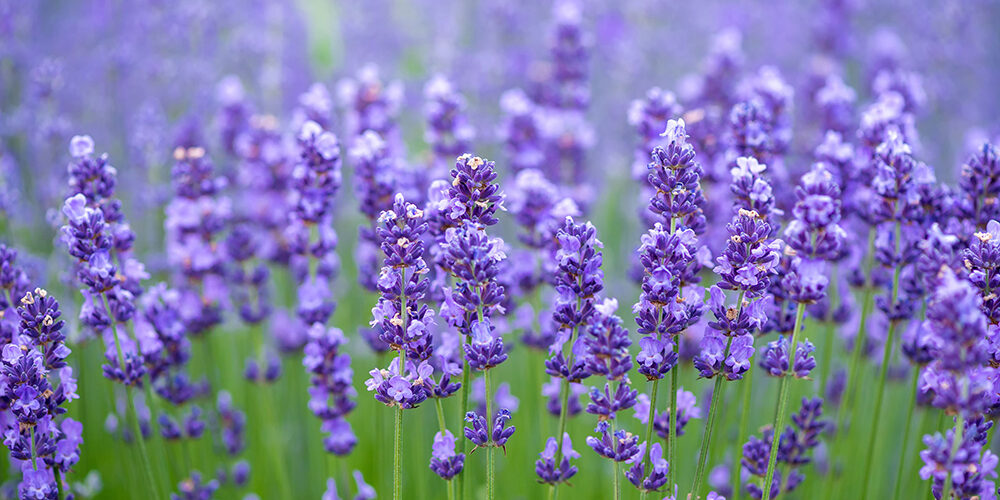Growing Lavender
Posted On April 4, 2020

Lavender is a bushy, strong-scented perennial plant from the Mediterranean. In most regions, its gray to green foliage stays evergreen throughout the year. Prized for its fragrance, medicinal properties, and beautiful color, lavender is a valued plant across the world. It also attracts pollinators to the garden.
See earl grey lavender ice cream recipe.
Planting
- It is best planted in the spring as the soil is warming up. If planted in the fall, use bigger plants to ensure survival over the winter.
- Plant lavender 2 to 3 feet apart. Plants typically reach between 1 and 3 feet in height.
- It thrives in any poor or moderately fertile soil. If you have heavy or clay soil, add some organic matter to improve drainage.
- Keep away from wet, moist areas.
Care
- Add mulch (rock or pea gravel work particularly well) to keep weeds to a minimum. Keep the mulch away from the crown of the lavender plant.
- Water once or twice a week after planting until plants are established. Water mature plants every two to three weeks until buds form, then once or twice weekly until harvest.
- In cold growing areas, cover the plants with a winter mulch of evergreen boughs or straw.
- In cold growing areas, if growing indoors over winter, place pot in a south-facing window with as much light as possible.
- Prune established plants in the spring when green leaves start to emerge from the base of the plant. Remove approximately one third of the top.
Pests/Diseases
- Fungal diseases, in humid climates
- Root rot due to excess water
Harvest/Storage
- Harvest the stems when approximately half of the flower buds have opened.
- Harvest in the morning hours when the oils are the most concentrated.
- Cut stems as long as possible. Gather into bundles and secure them with rubber bands.
- Dry the bundles of lavender in a cool, dark place where there is good air circulation.
- Use your lavender to make lavender sachets—a lovely gift!
Recommended Varieties
- English lavender (Lavandula angustifolia) is hardy to Zone 5 and there are hundreds of varieties available in many colors and sizes. It often blooms twice in one season.
- ‘Hidcote’: Compact, silver-gray foliage, deep purple flowers.
- ‘Munstead’: Compact, green foliage, violet-blue flowers.
- A hybrid of English and Portuguese lavender (L. latifolia), Lavandins (L. x intermedia) are generally larger plants that bloom only once, later in the summer.
- ‘Phenomenal’: Vigorous variety that is highly tolerant of heat and humidity and resistant to common root and foliar diseases. Long flower spikes.
- ‘Provence’: Vigorous, long-stemmed variety, very fragrant.
- Spanish lavender (L. stoechas) and French or fringed lavender (L. dentata) are only hardy in Zones 7 to 9.
Website: www.almanac.com